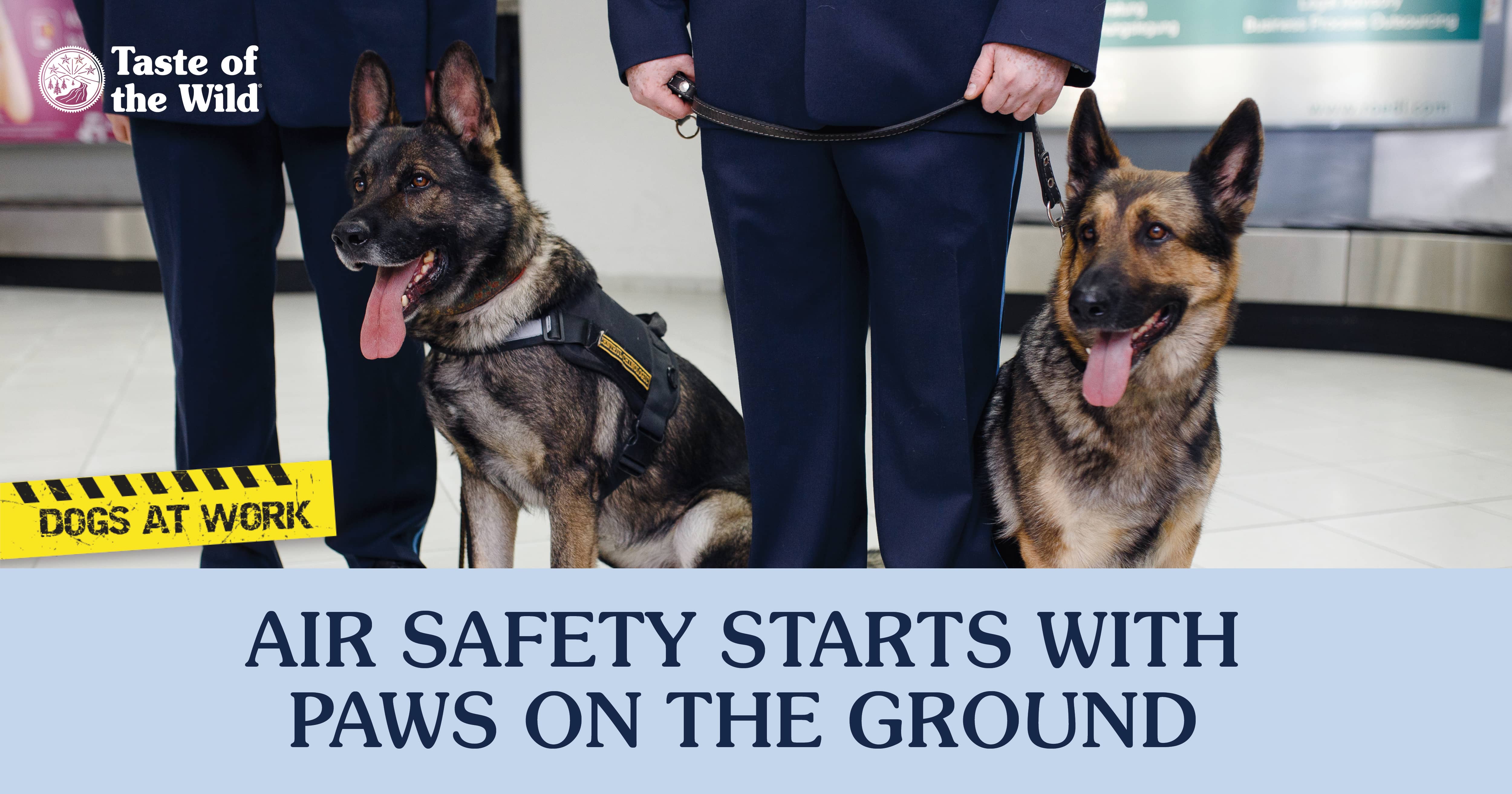
Transportation Security Administration (TSA) dogs can’t prevent turbulence during your flight, but they can help you fly through security a little faster.
Trained to sniff out a range of explosives at airports and other transportation hubs, these dogs can screen passengers — without touching them — faster than traditional methods. And that helps loosen airport bottlenecks.
A nose for explosives
A good explosive detection dog starts with an extraordinary sense of smell. Easily found, considering that the average dog can detect a teaspoon of sugar in a million gallons of water (enough to fill two Olympic-sized pools), according to the book Inside of a Dog by Alexandra Horowitz, a dog cognition researcher at Barnard College.
But the dogs also need a high-energy drive to hunt (usually for a reward). That’s why the TSA generally focuses on hunting or working breeds, including German shepherds, Belgian malinois, Labrador retrievers, golden retrievers, German short-haired pointers, wirehaired pointers and Vizslas.
While slightly less important, another canine trait the TSA values is floppy ears. The rationale is that dogs with ears that fold gently over their heads may be less intimidating (and less likely to scare children travelers) than dogs with straight-up ears.
It takes two
Even with a sensitive sense of smell and a strong hunting drive, dogs need a trained handler on the other end of the leash. Transportation security inspectors make up about 35 percent of the handlers, but the majority are local and state law enforcement officers.
The dogs actually live with the handlers, so they are truly a team on and off the job.
Training in real-life environments
Passenger-screening dogs and their handlers go through an intensive 12-week course at the Canine Training Center at Joint Base San Antonio-Lackland in San Antonio, Texas.
The 25,000-square-foot facility includes 13 full-scale “sets” constructed to look like actual scenes where the dogs will eventually work, including an airport gate area, a security checkpoint, a baggage claim area and an aircraft interior where dogs can clamber on seats to sniff overhead bins. The facility even employs people to play the role of passengers.
Using positive-reinforcement techniques, the dogs are rewarded with treats, chew toys or praise each time they detect the scent of an explosive. This helps them focus on the relevant scents and keeps them motivated to keep searching. Dog teams are also trained at other locations in the geographic area, such as the San Antonio International Airport and the local bus station.
About 83 percent of dogs in the program pass the training. The remainder are adopted out through a special TSA program, but currently there’s a long waiting list, so unfortunately, the organization can’t accept any more applications for the time being.
A lifetime of training
Of course, the training doesn’t stop after graduation. The teams first go back to the location they’ll be stationed to allow the dog to acclimate to the sights, sounds and distractions of the environment.
Handlers also keep training the dogs on a weekly basis. The dogs need to be rewarded for finding the correct scent periodically to keep them interested and disciplined. Teams must also be recertified every year, when they may learn new scents, depending on emerging intelligence data.
Although it may be tempting to pet these dogs when you see them in the airport, please don’t. They need to focus on the important job of keeping you safe, without distraction.
Eventually, these hard-working dogs do get to enjoy a laid-back retirement. Some of these dogs may be available for adoption, but since the handlers and trainers get first dibs, they’re generally welcomed into the houses they already know as home.
The information in this blog has been developed with our veterinarian and is designed to help educate pet parents. If you have questions or concerns about your pet's health or nutrition, please talk with your veterinarian.
